
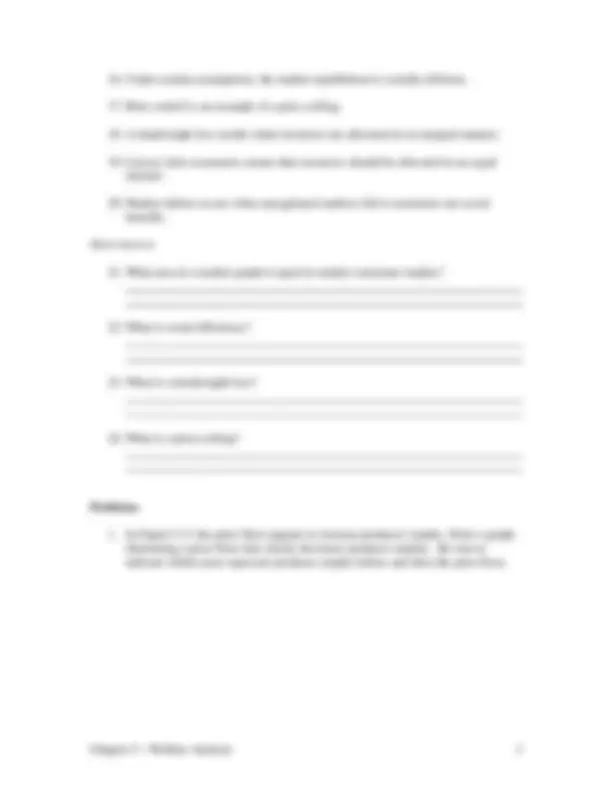
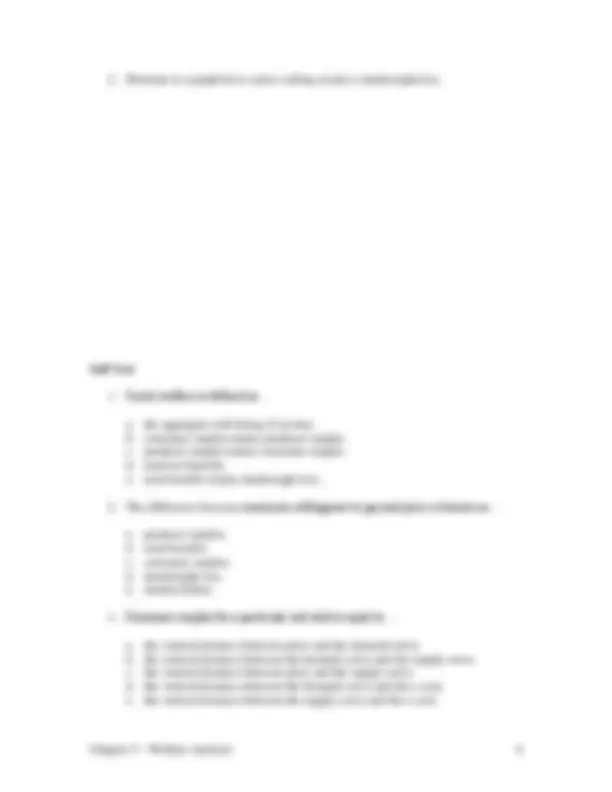
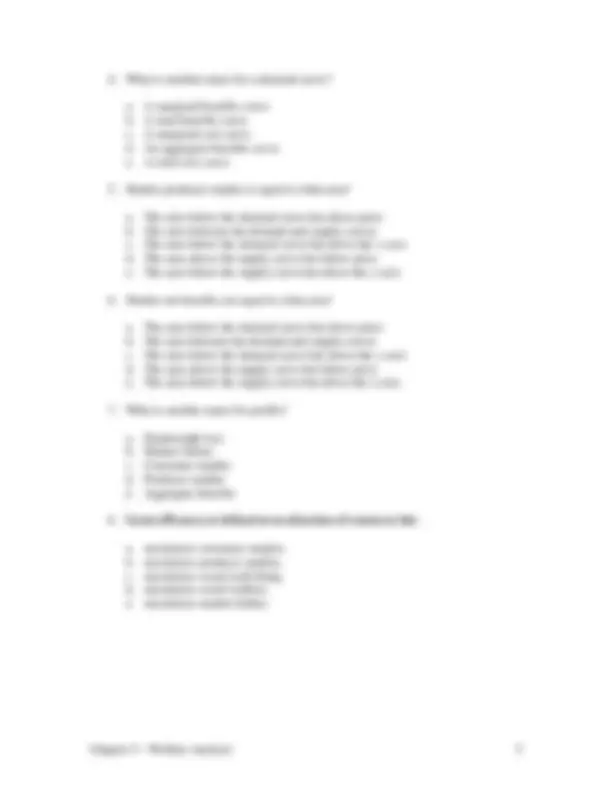
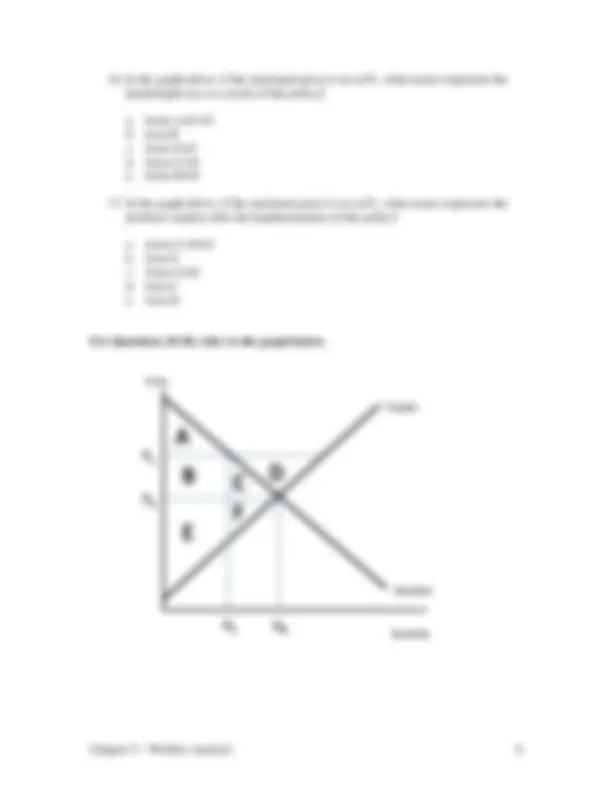
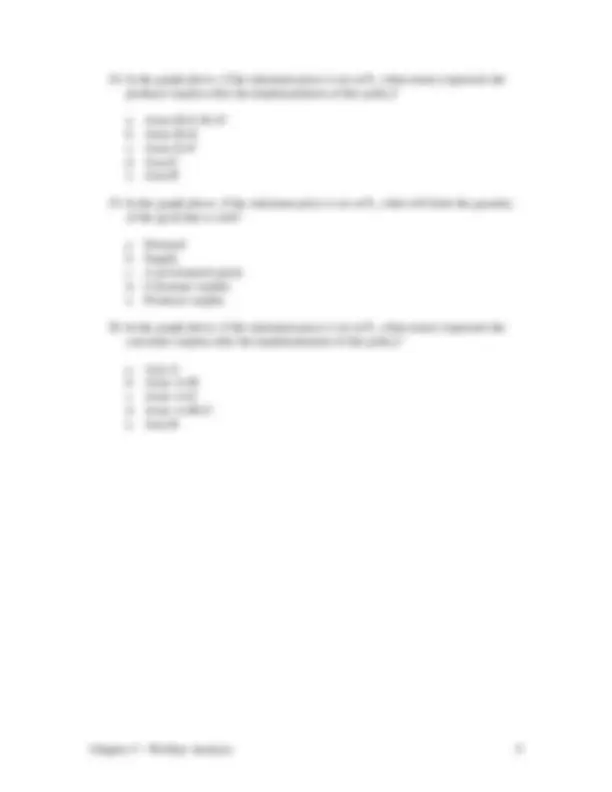
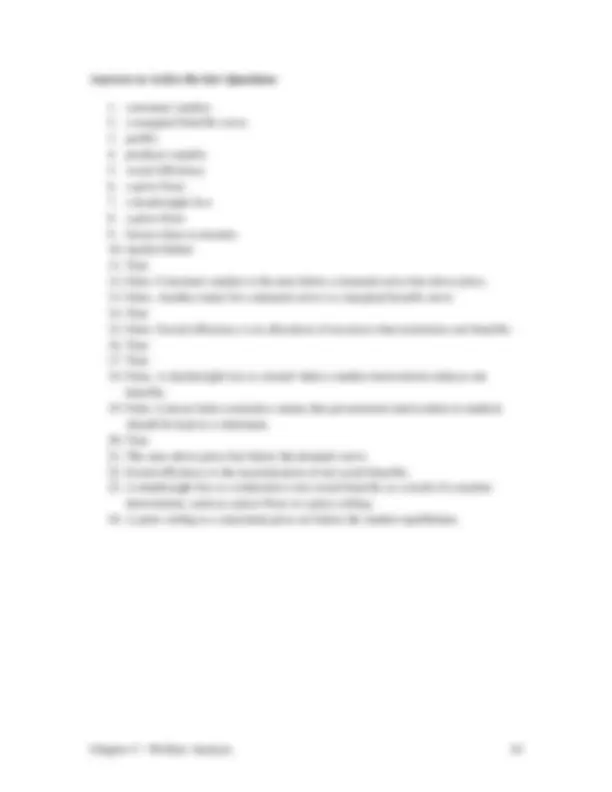


Study with the several resources on Docsity

Earn points by helping other students or get them with a premium plan


Prepare for your exams
Study with the several resources on Docsity

Earn points to download
Earn points by helping other students or get them with a premium plan
Community
Ask the community for help and clear up your study doubts
Discover the best universities in your country according to Docsity users
Free resources
Download our free guides on studying techniques, anxiety management strategies, and thesis advice from Docsity tutors
Answers to Self Test Questions.
Typology: Exams
1 / 12

This page cannot be seen from the preview
Don't miss anything!







WELFARE ANALYSIS Microeconomics in Context (Goodwin, et al.), 3rd^ Edition
Chapter Overview
This chapter presents welfare analysis, including the topics of consumer and producer surplus. This chapter also includes a close examination of different ways of understanding efficiency. Consideration of what is efficient—and for whom—is followed by a first look at policy conclusions that have been drawn from this approach and at the requirements for “perfect markets” that underlie traditional welfare analysis.
Objectives
After reading and reviewing this chapter, you should be able to:
Key Term Review
welfare economics social welfare third-party effects maximum willingness to pay (WTP) consumer surplus marginal change marginal benefit (for consumers) marginal benefits curve net benefits market (or aggregate) benefits market consumer surplus producer surplus marginal cost market producer surplus social efficiency (in welfare economics) price ceiling deadweight loss price floor laissez-faire market failure
Active Review Questions
Fill in the blank
True or False
Self Test
a. the aggregate well-being of society. b. consumer surplus minus producer surplus. c. producer surplus minus consumer surplus. d. total net benefits. e. total benefits minus deadweight loss.
a. producer surplus. b. total benefits. c. consumer surplus. d. deadweight loss. e. market failure.
a. the vertical distance between price and the demand curve. b. the vertical distance between the demand curve and the supply curve. c. the vertical distance between price and the supply curve. d. the vertical distance between the demand curve and the x-axis. e. the vertical distance between the supply curve and the x-axis.
a. A marginal benefits curve b. A total benefits curve c. A marginal cost curve d. An aggregate benefits curve e. A total cost curve
a. The area below the demand curve but above price b. The area between the demand and supply curves c. The area below the demand curve but above the x-axis d. The area above the supply curve but below price e. The area below the supply curve but above the x-axis
a. The area below the demand curve but above price b. The area between the demand and supply curves c. The area below the demand curve but above the x-axis d. The area above the supply curve but below price e. The area below the supply curve but above the x-axis
a. Deadweight loss b. Market failure c. Consumer surplus d. Producer surplus e. Aggregate benefits
a. maximizes consumer surplus. b. maximizes producer surplus. c. maximizes social well-being. d. maximizes social welfare. e. maximizes market failure.
For Questions 14-17, refer to the graph below.
a. laissez-faire economics. b. a price floor. c. a price ceiling. d. a market failure. e. an inequitable policy.
a. Area A b. Areas A+B c. Areas A+C d. Areas A+B+C e. Areas A+B+C+D
Quantity
Price
Demand
Supply
a. Areas A+C+G b. Area B c. Areas E+F d. Areas C+D e. Areas B+D
a. Areas C+D+G b. Area G c. Areas G+D d. Area C e. Area D
For Questions 18-20, refer to the graph below.
Quantity
Price
Demand
Supply
Answers to Active Review Questions
Answers to Problems
Quantity
Price
Demand
Supply
P 0
Q 1 Q 0
A
B
C
P 1 Price Floor
Quantity
Price
Demand
Supply
P 0
Q 1 Q 0
A B C D
E
P 1